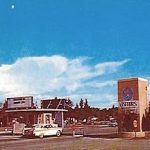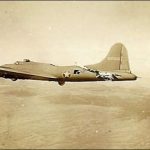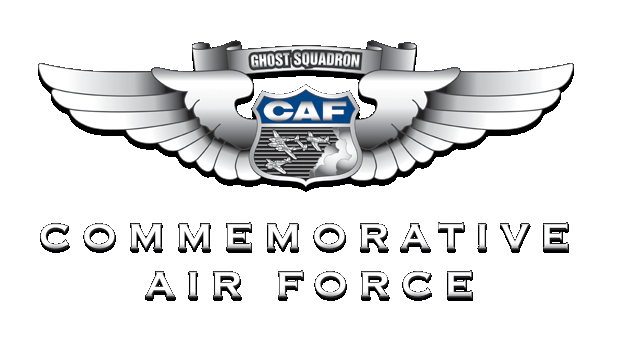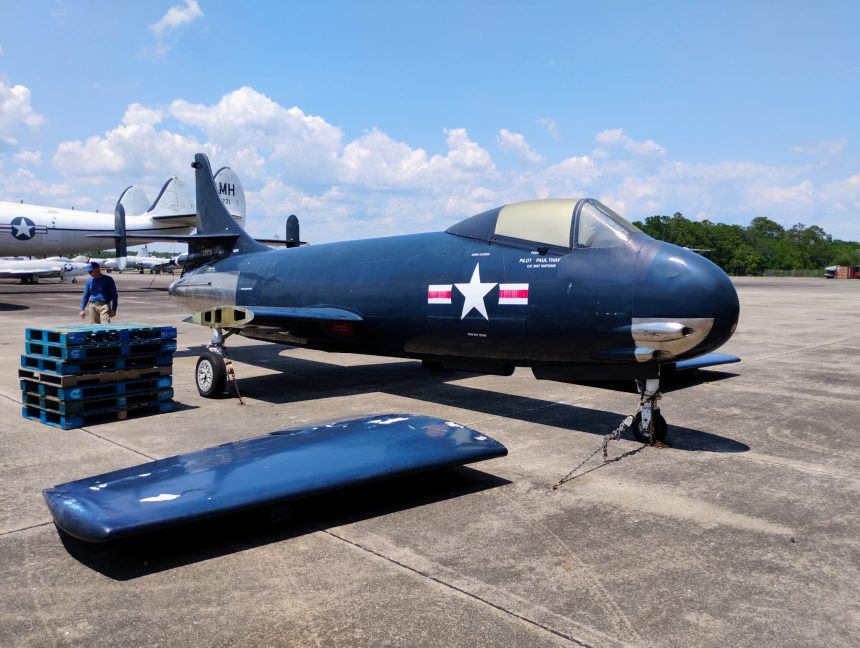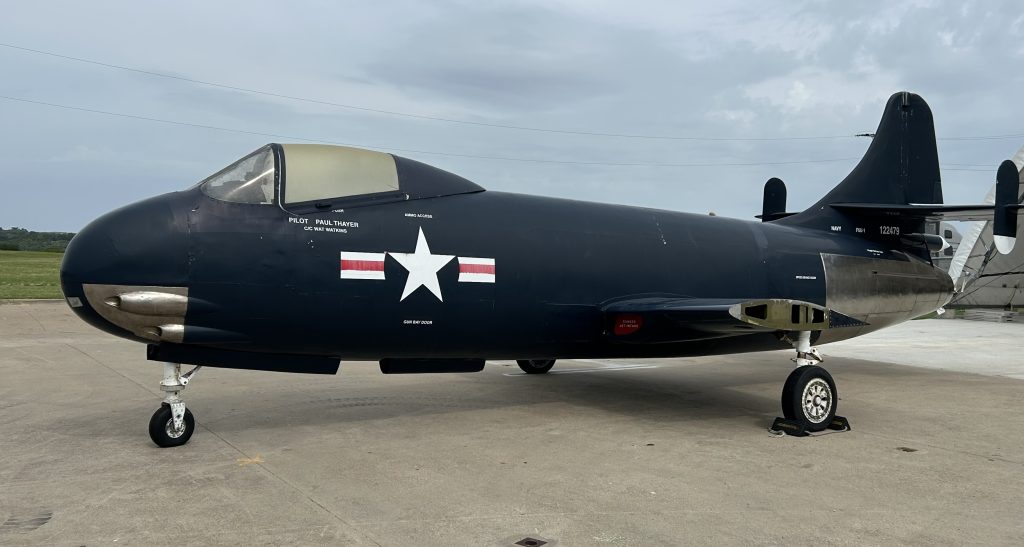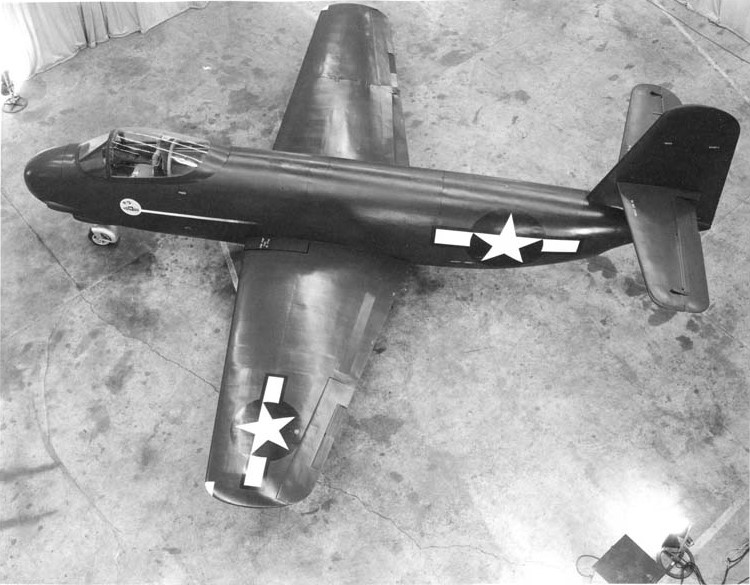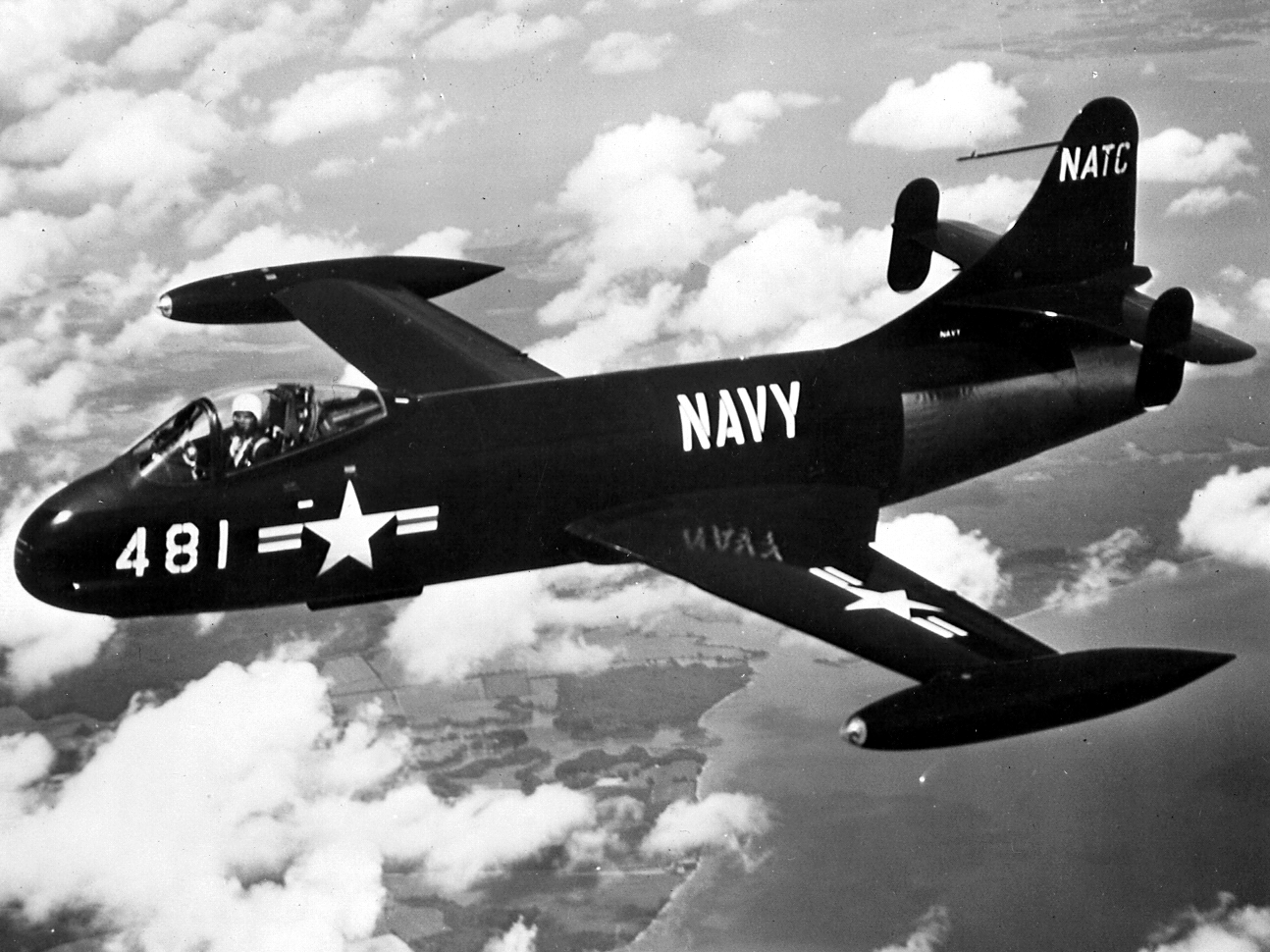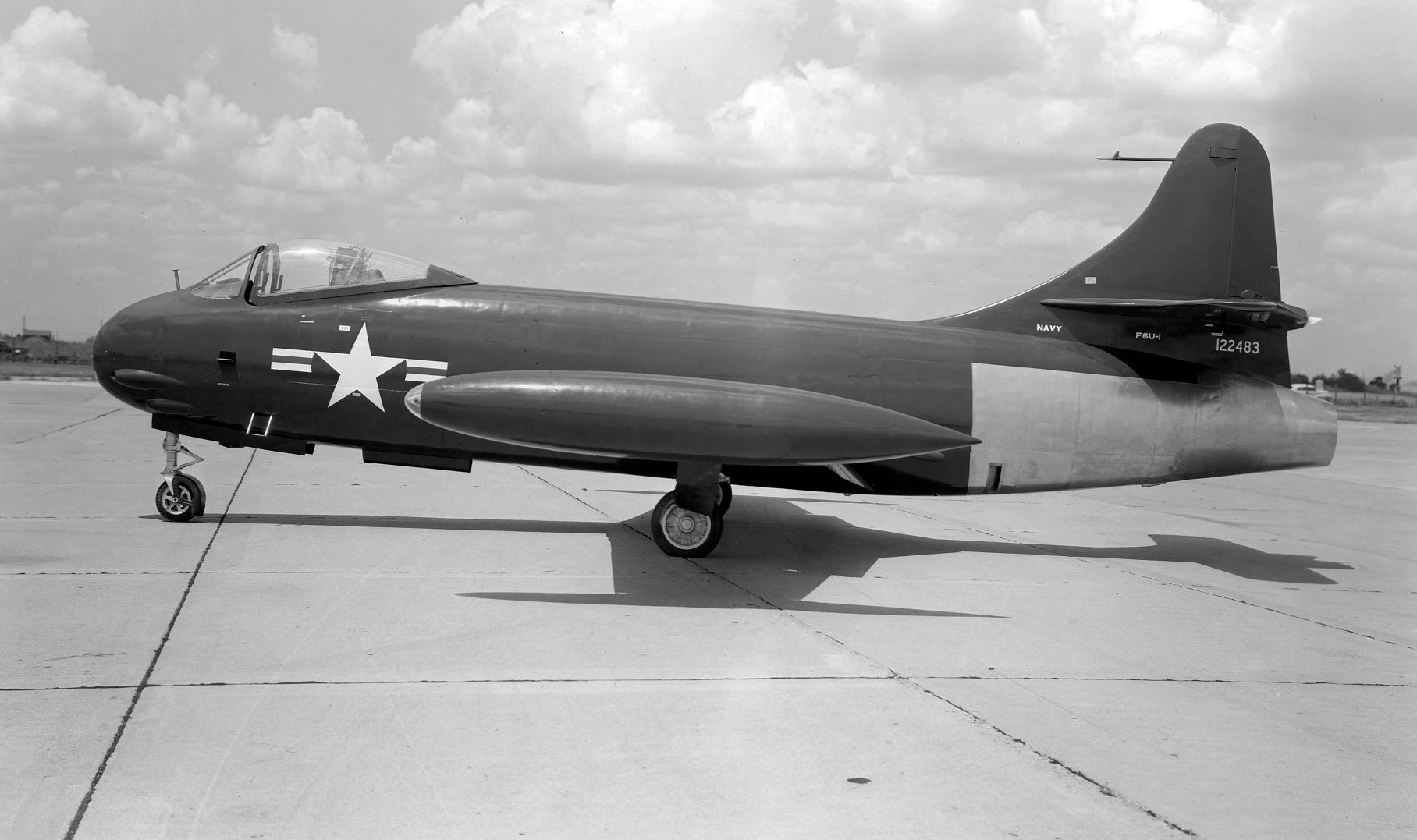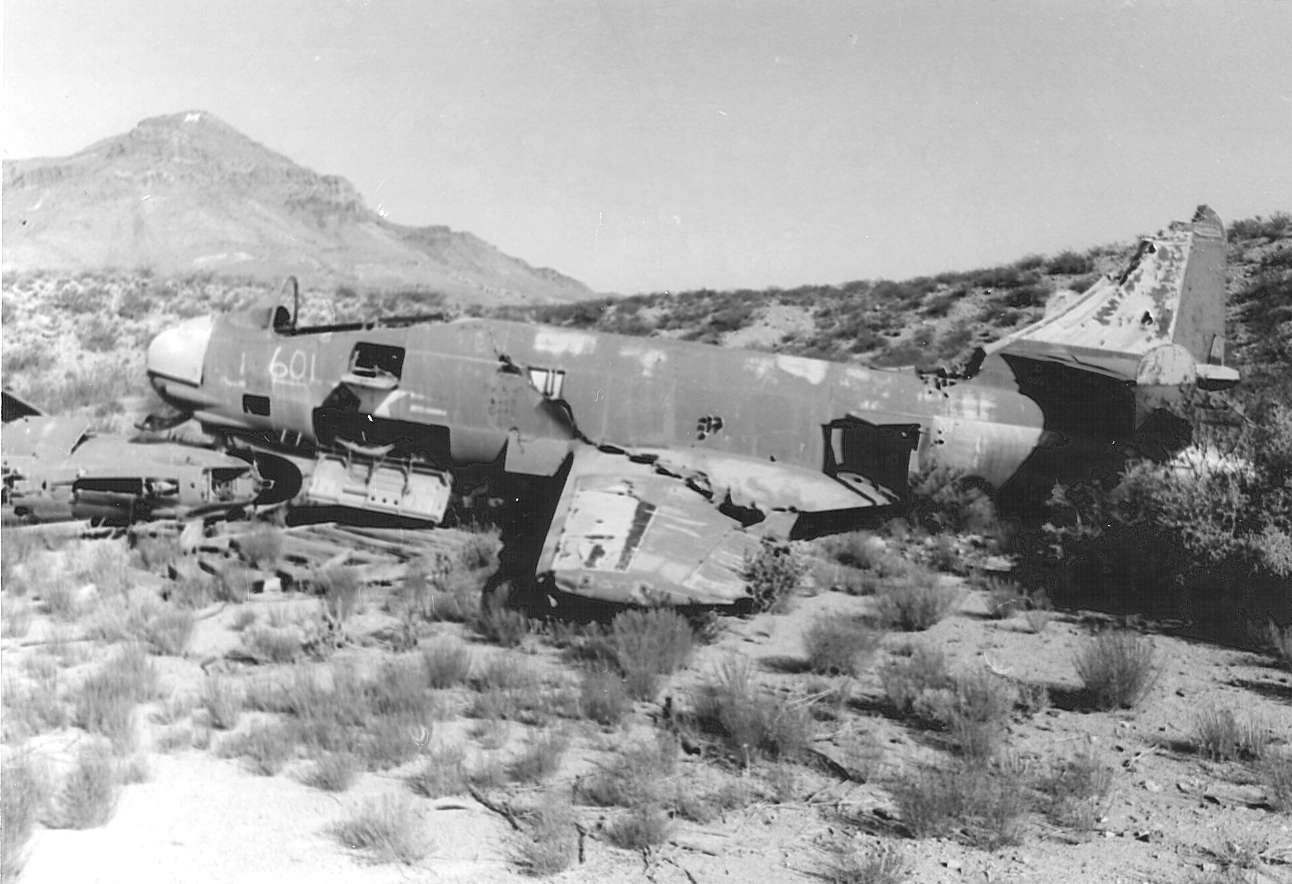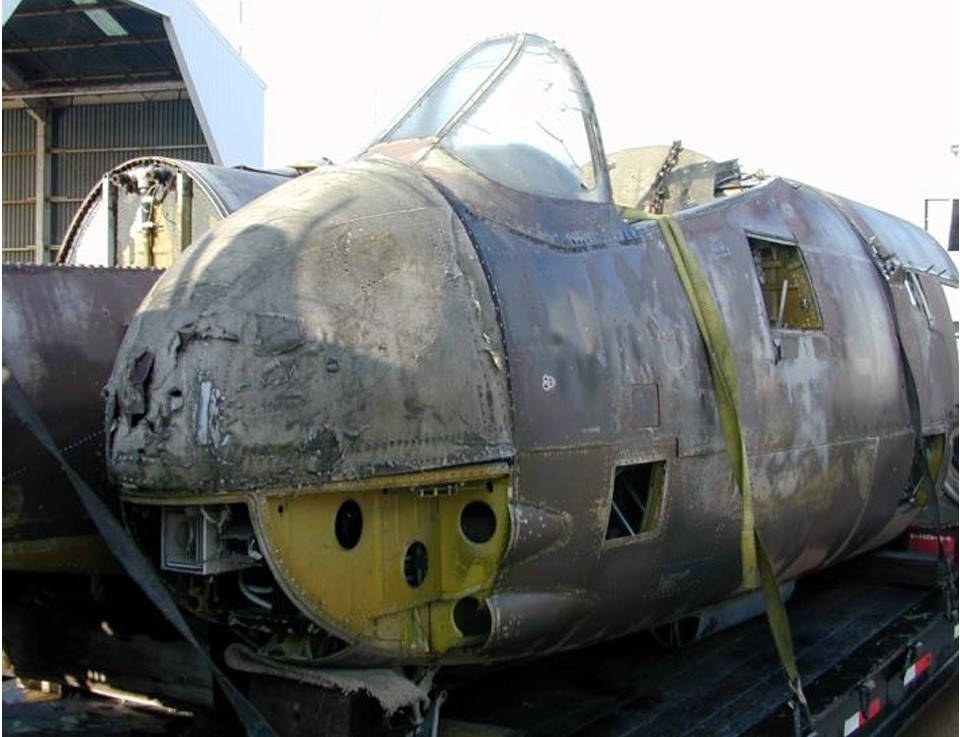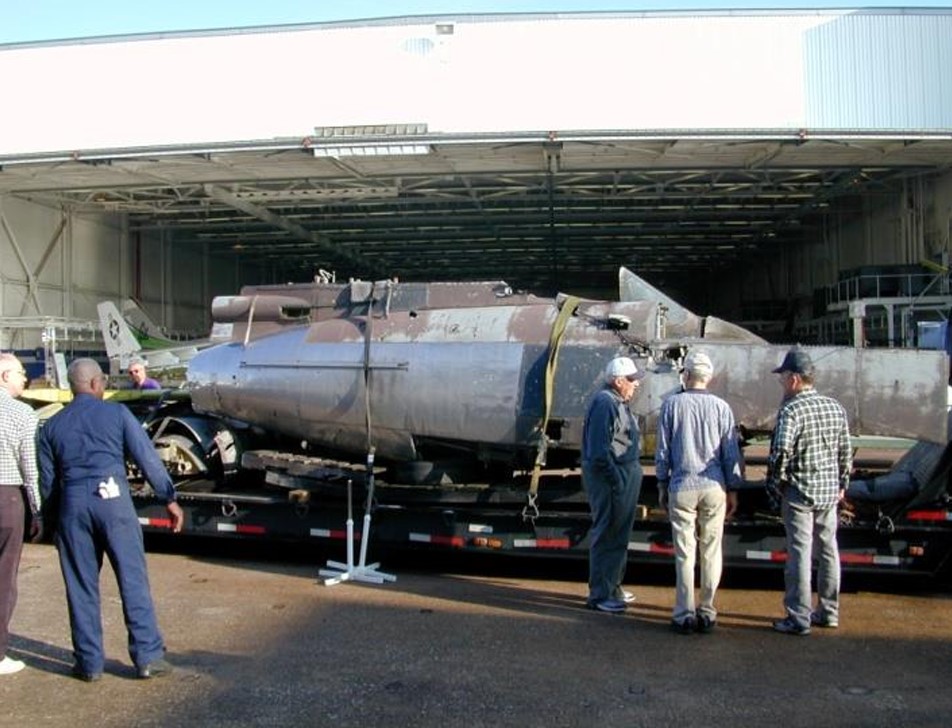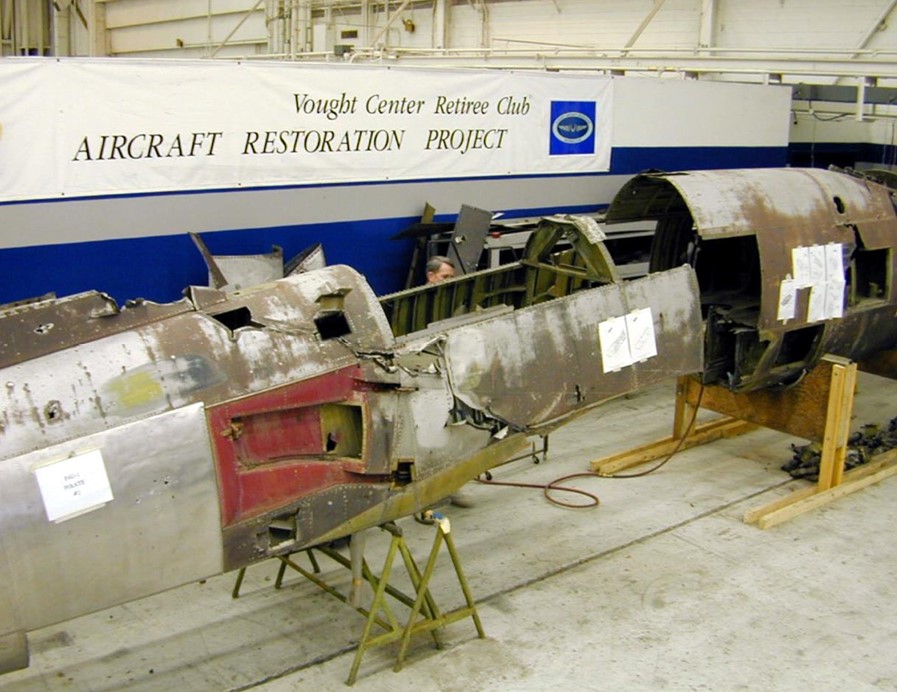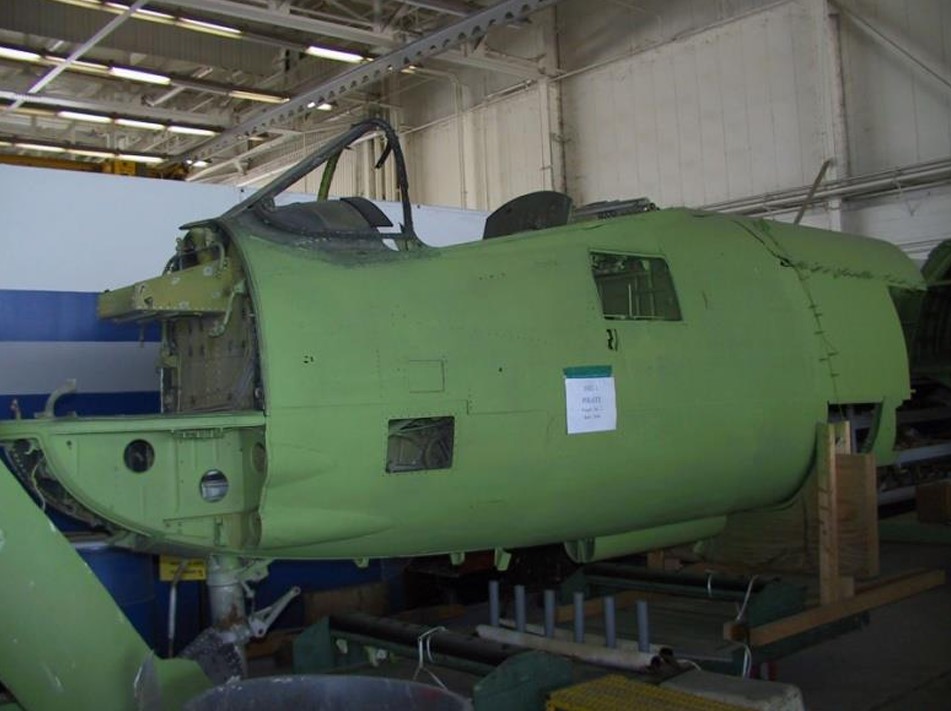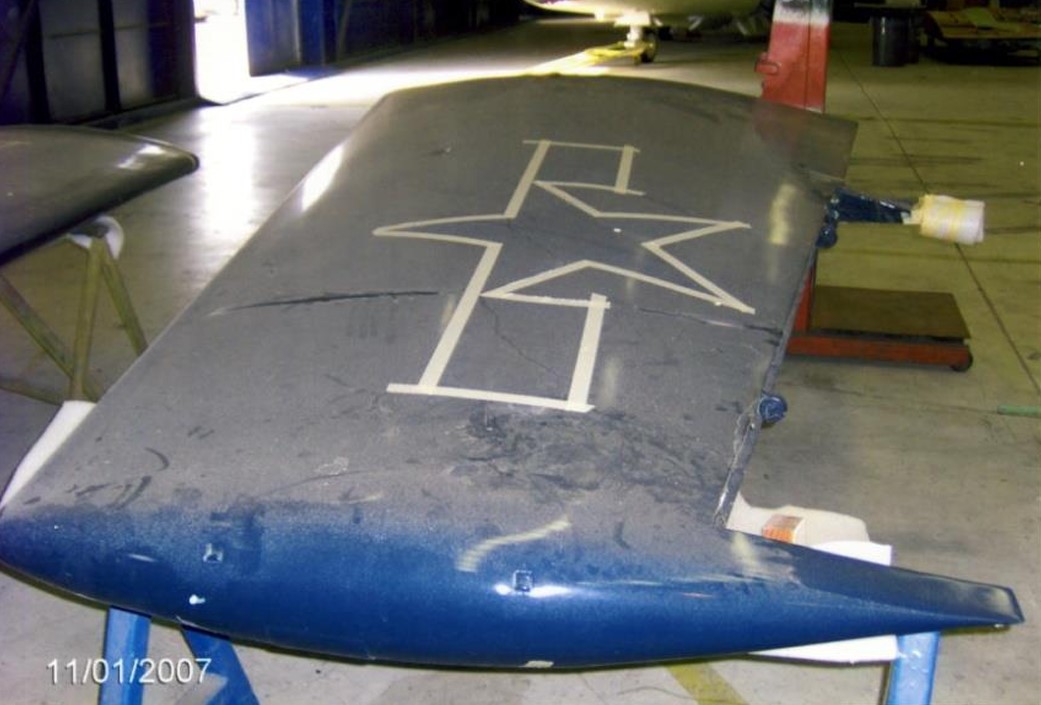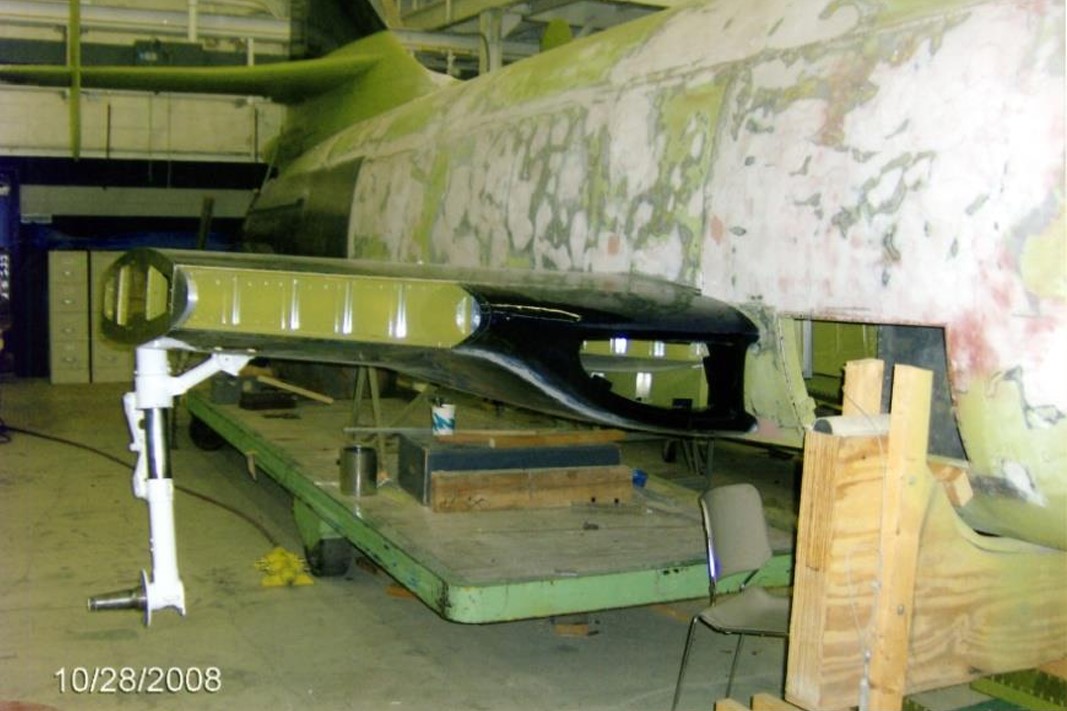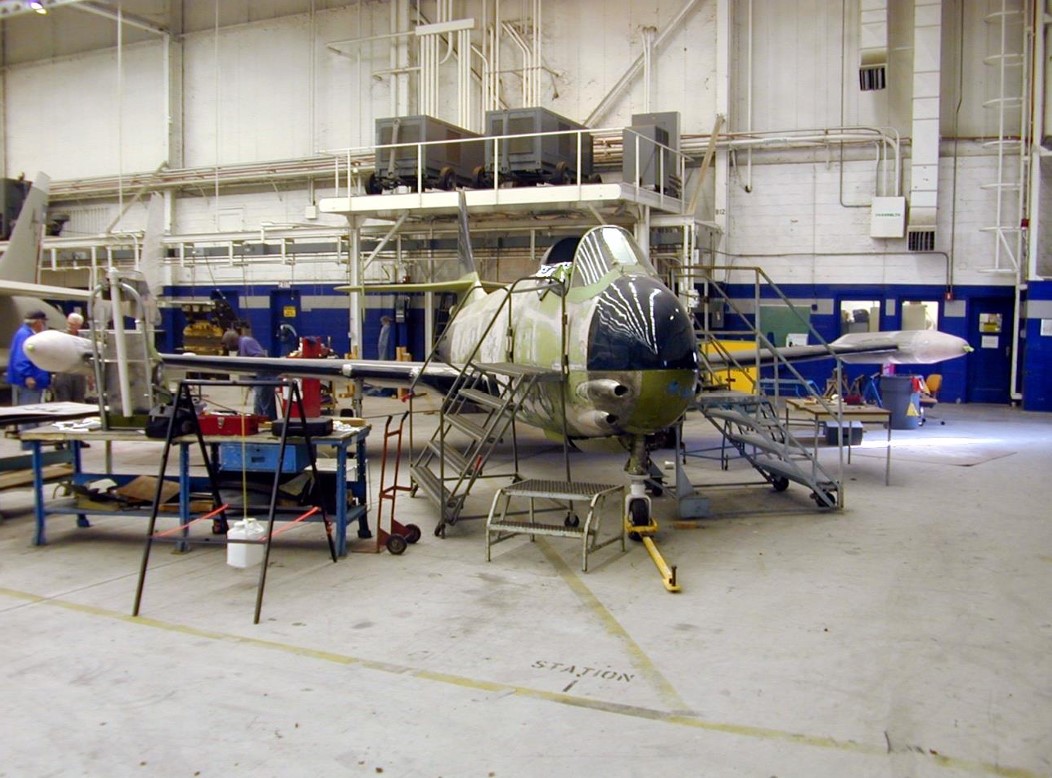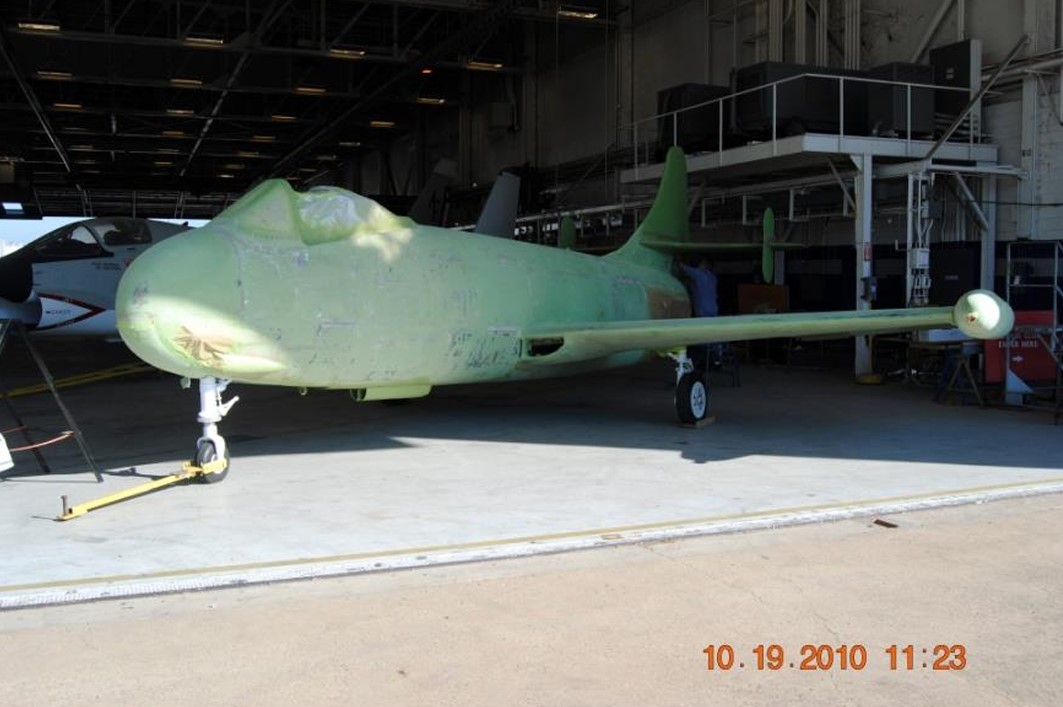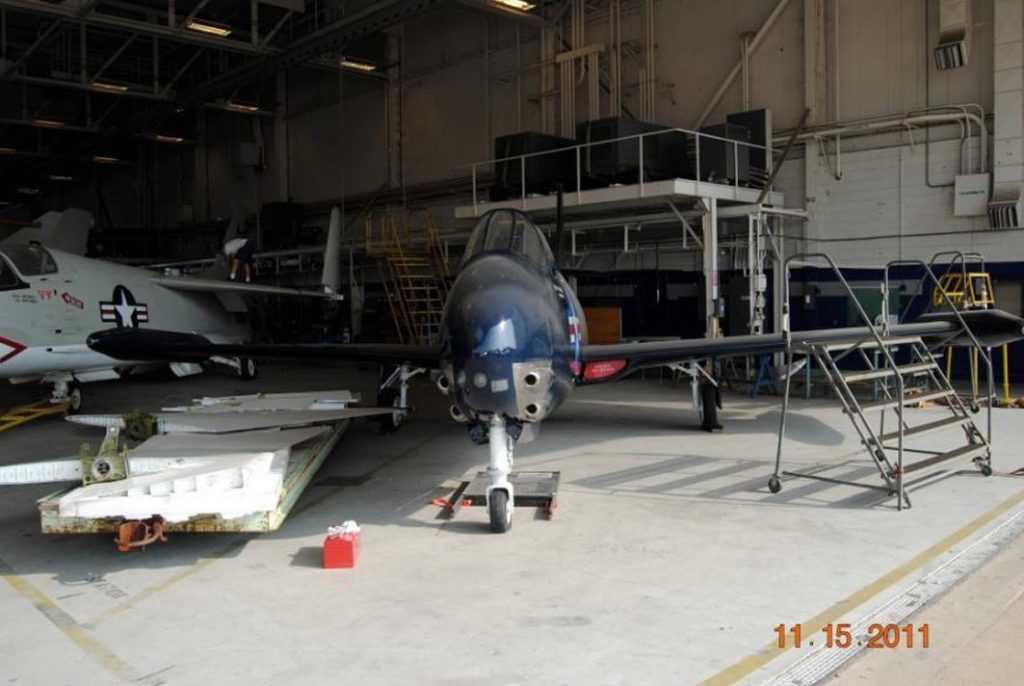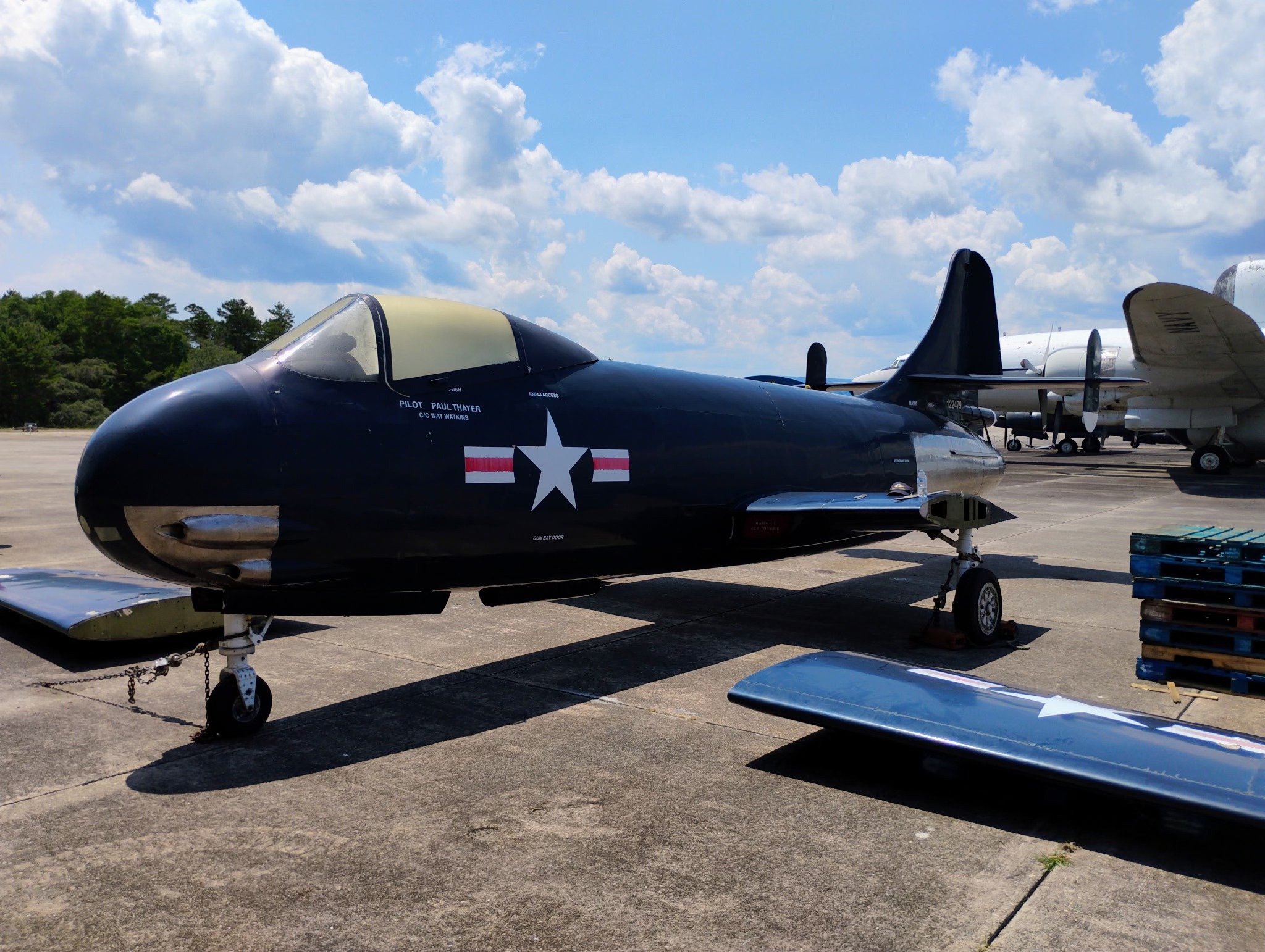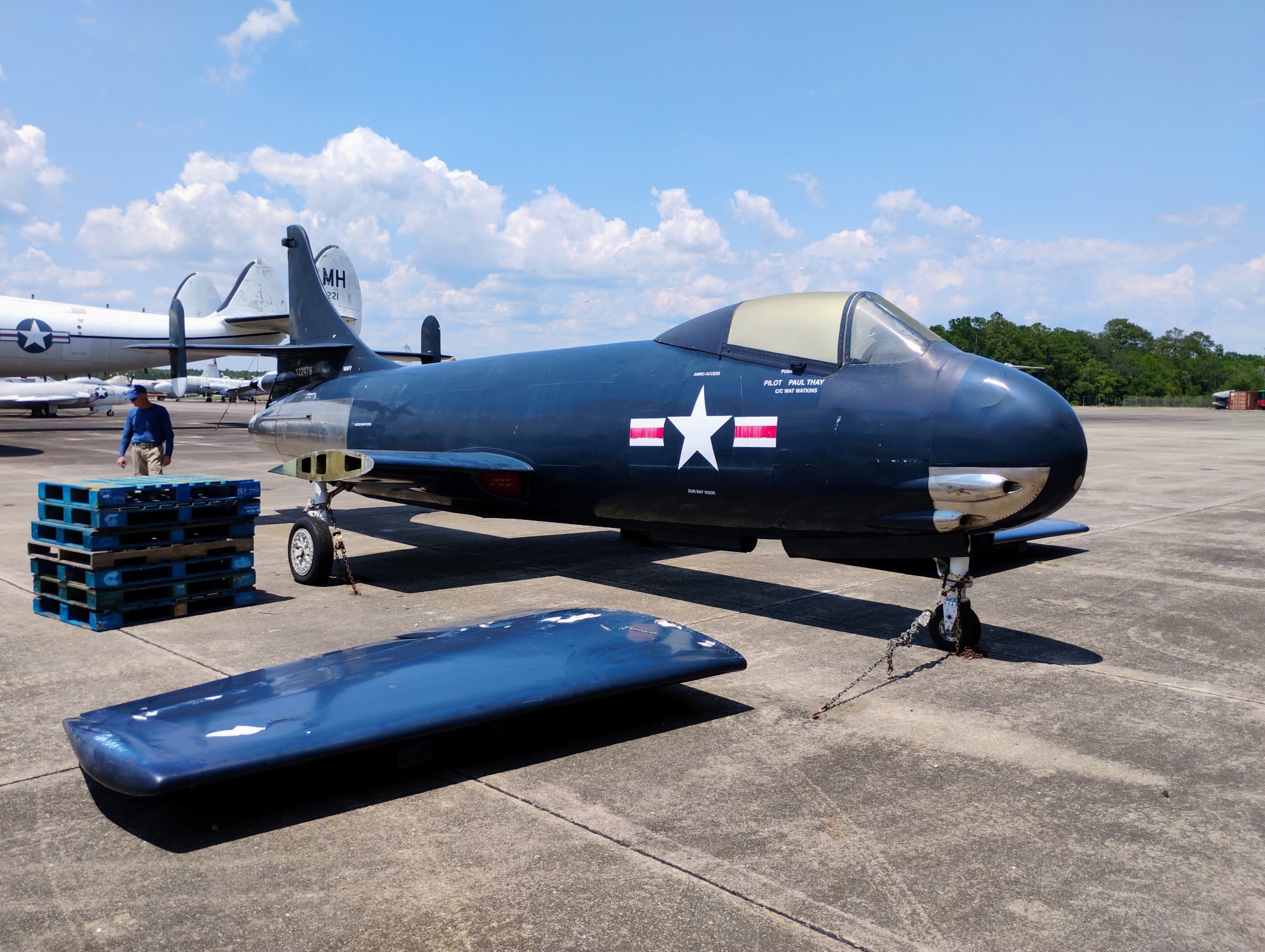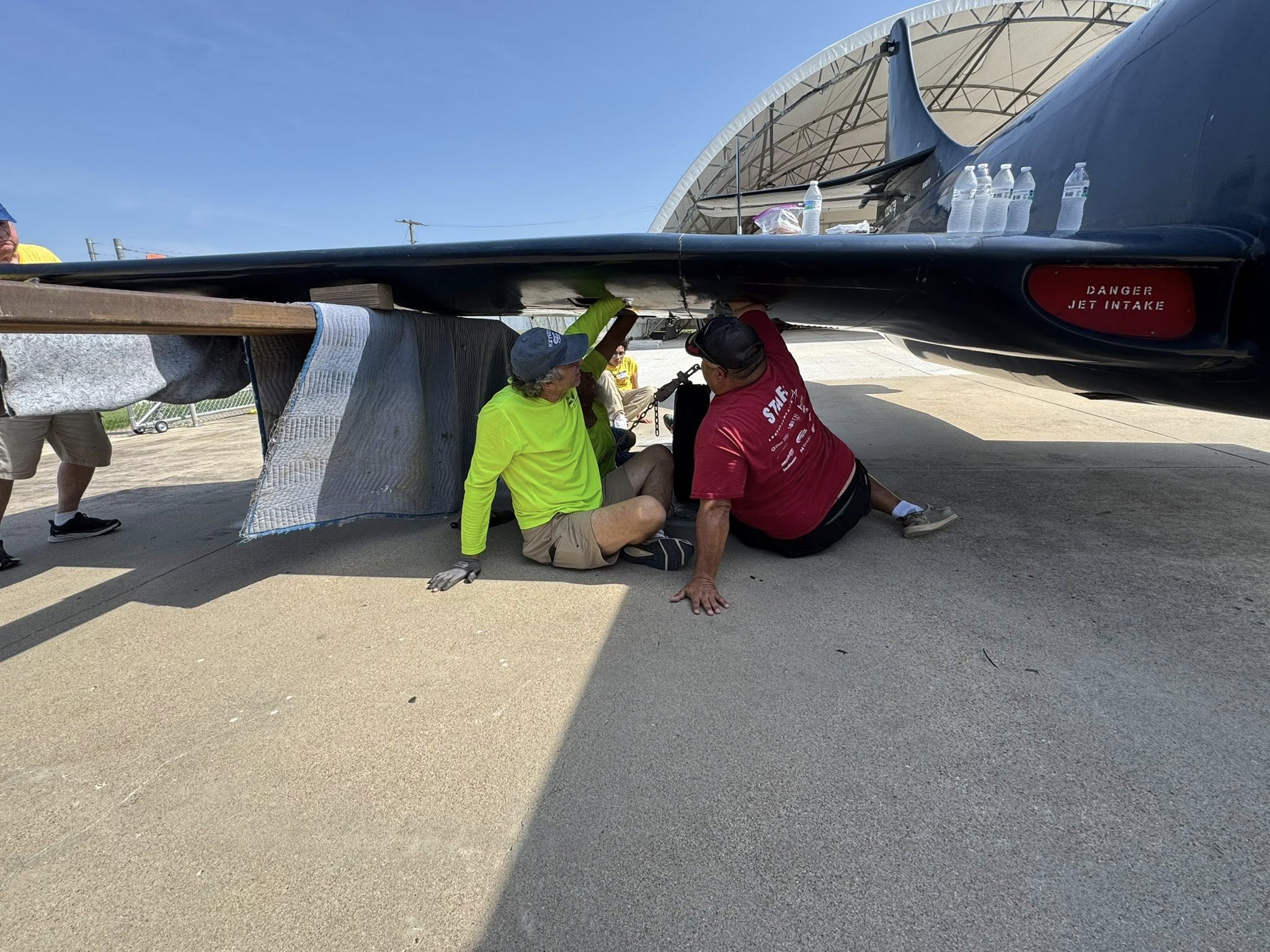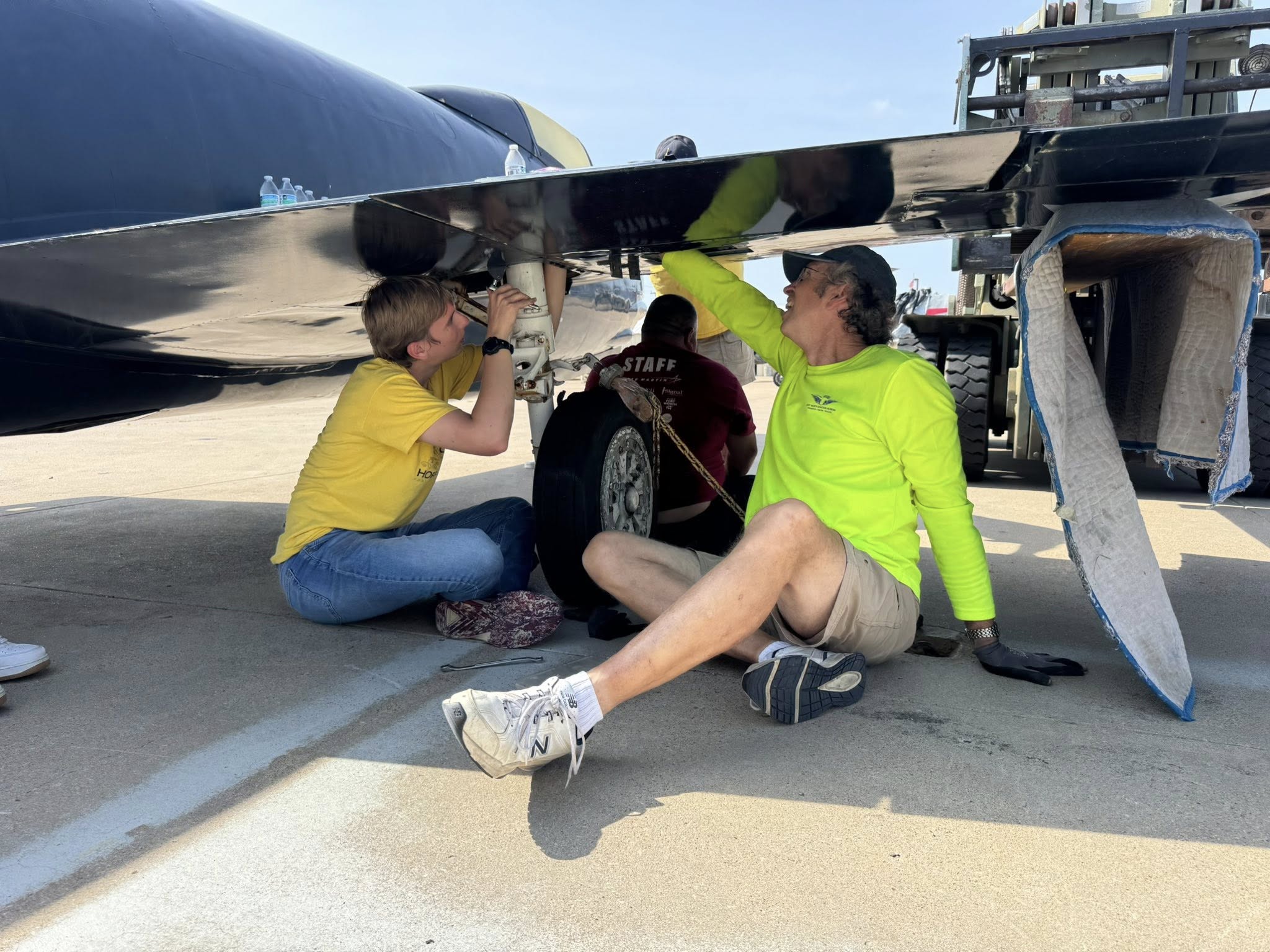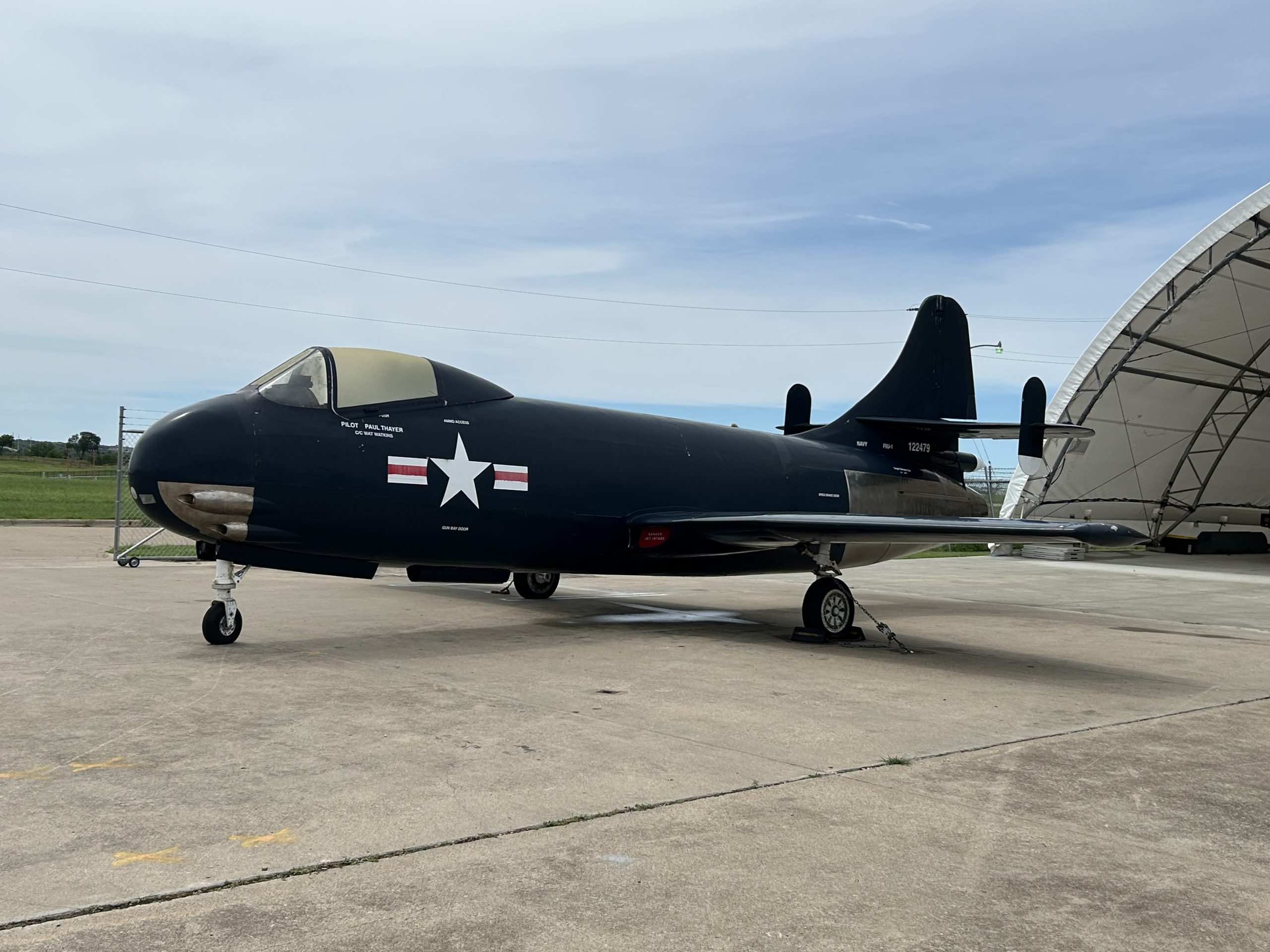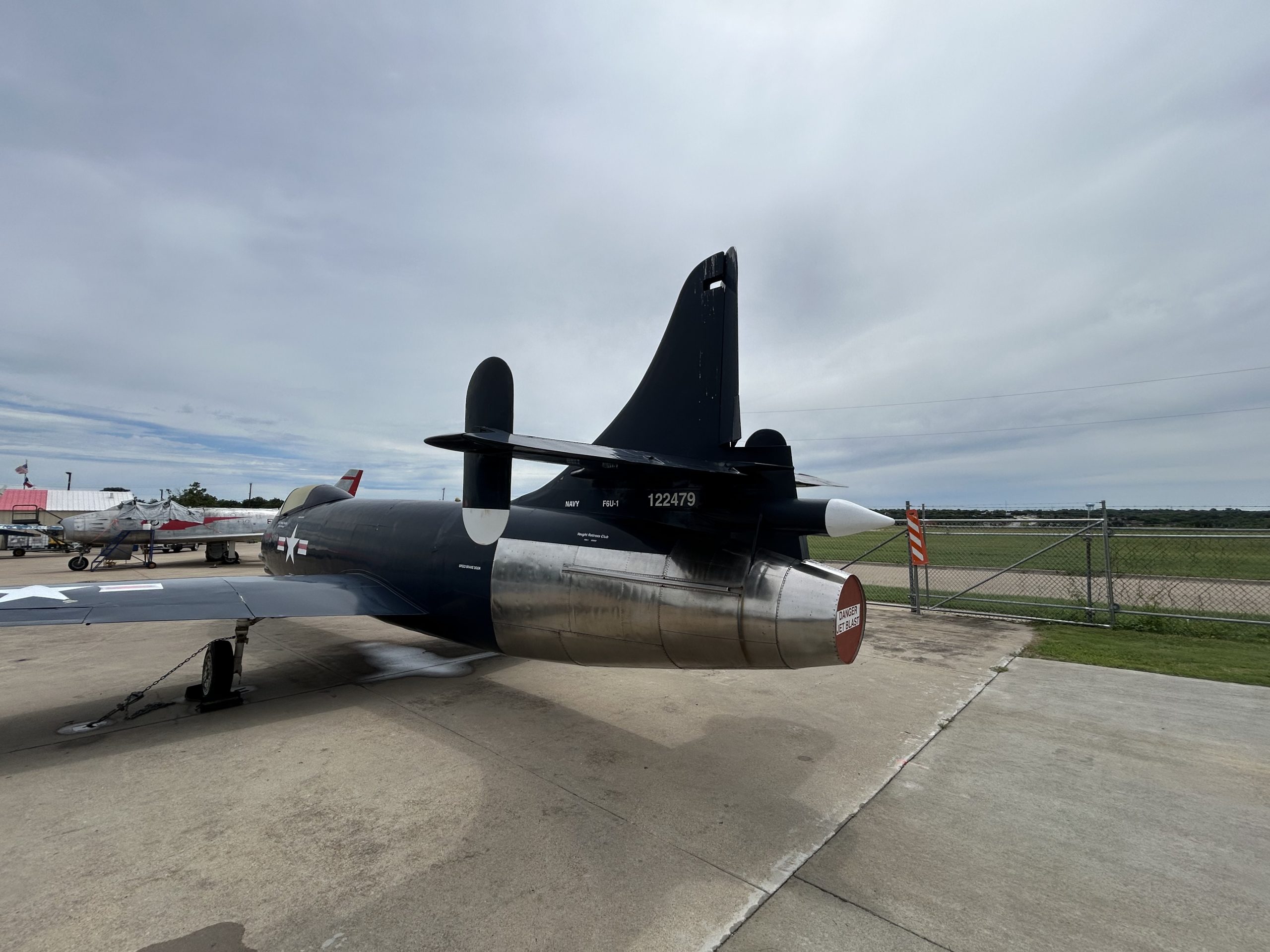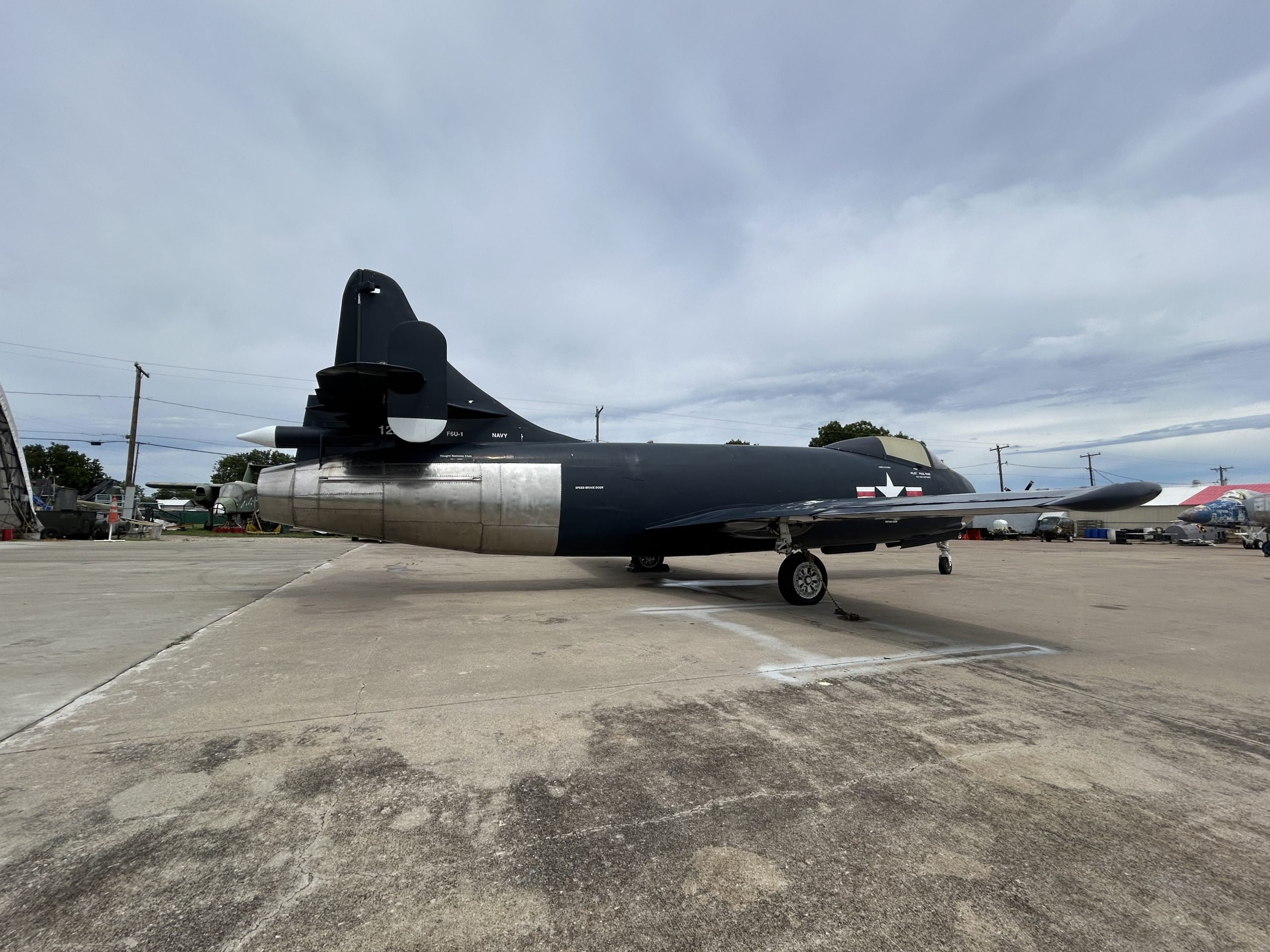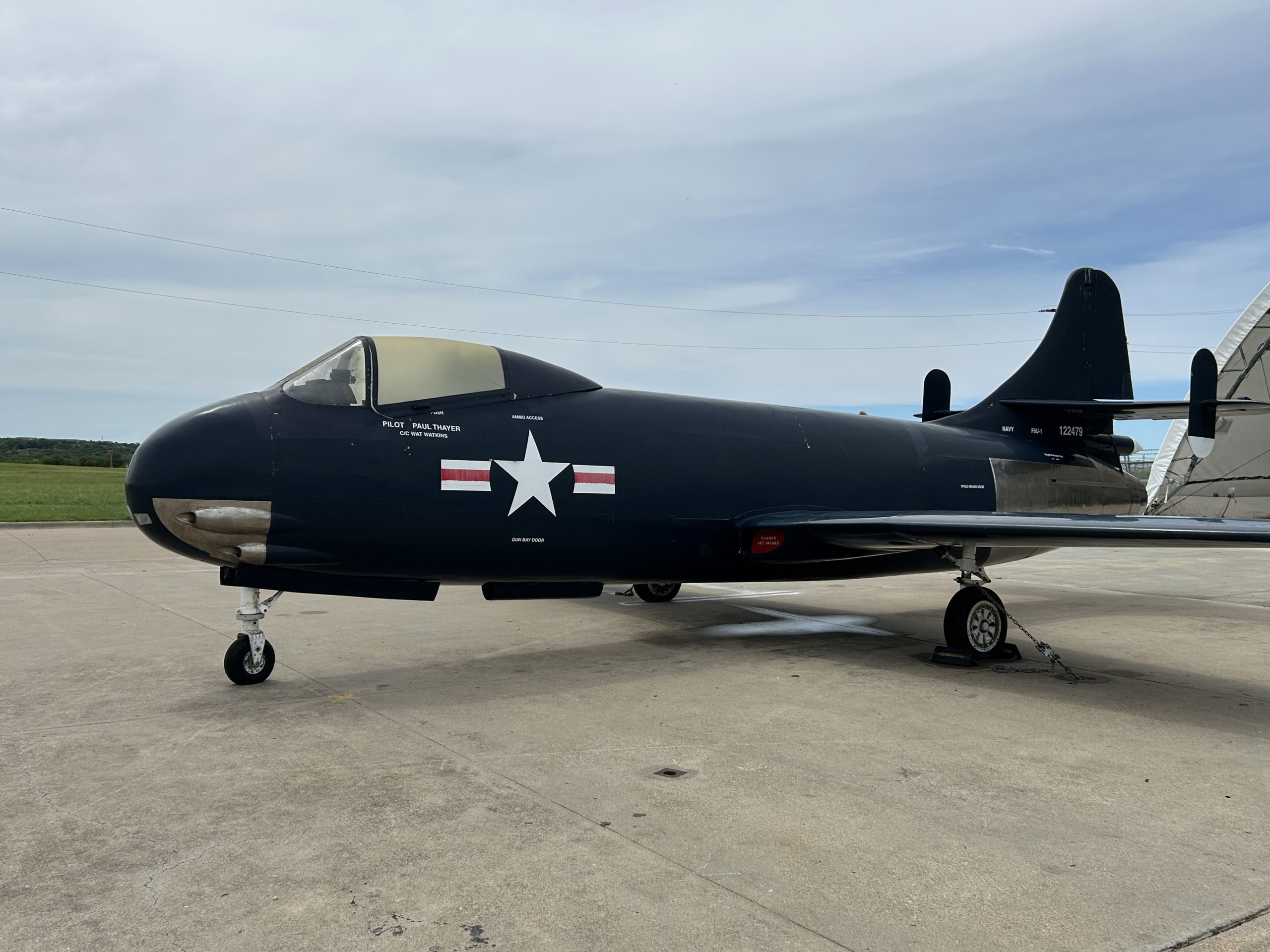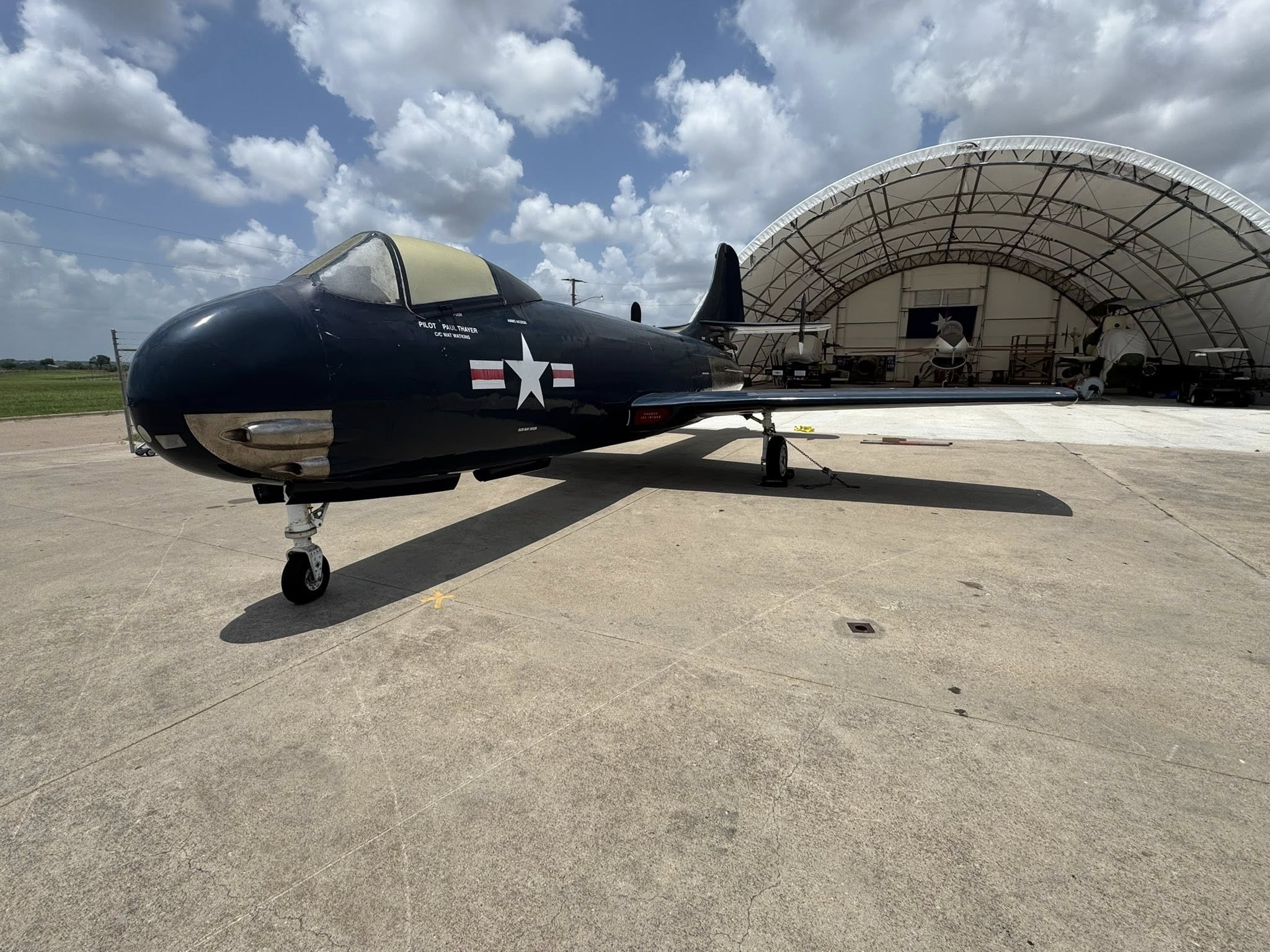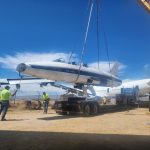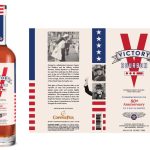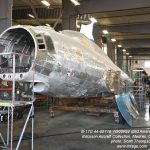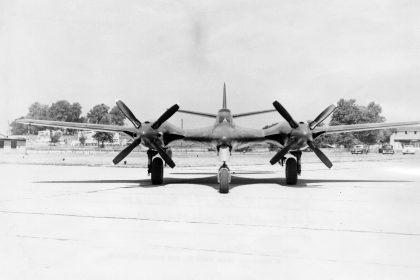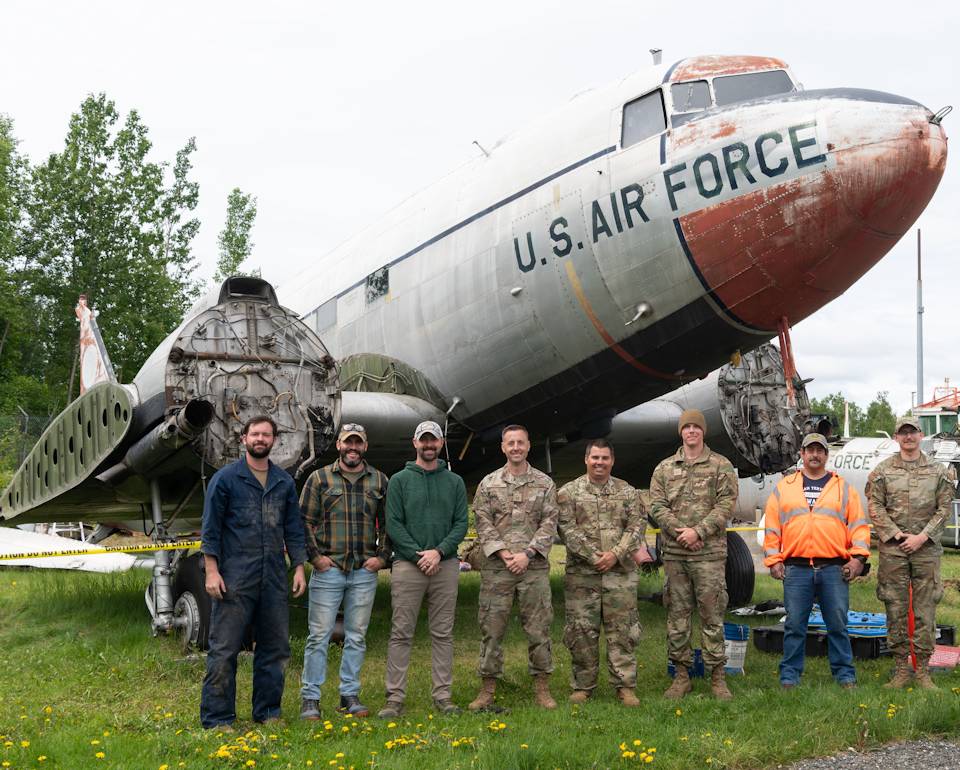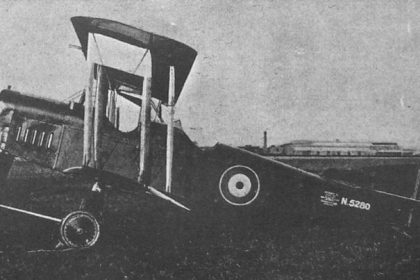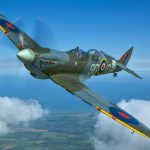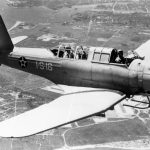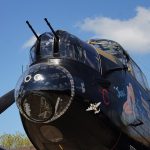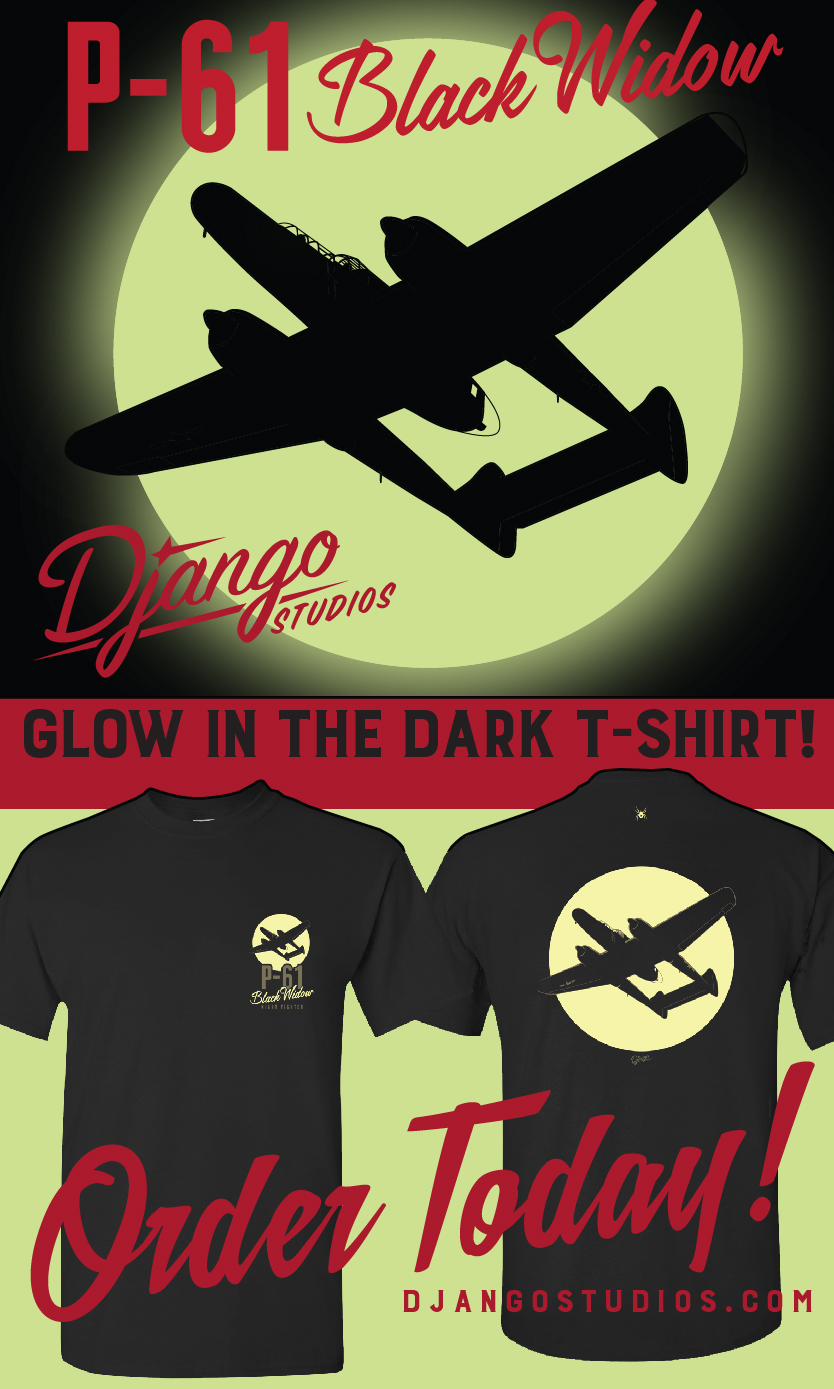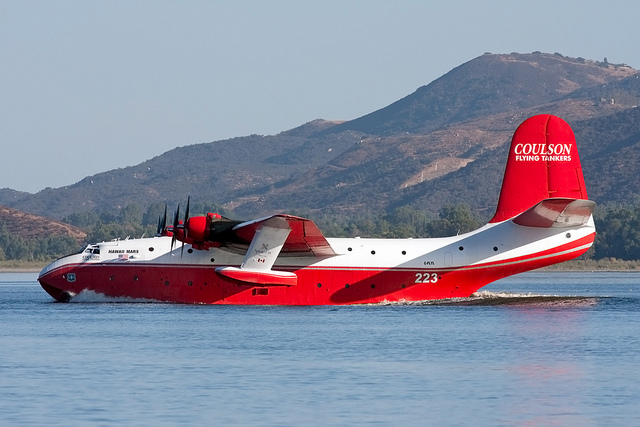On Sunday, June 8th, the Fort Worth Aviation Museum in Texas just took delivery of the last remaining Vought F6U Pirate following its overland journey from the National Naval Aviation Museum in Pensacola, Florida. Little-known to many, the Pirate was not as successful as its designers may have hoped for, but it still marked the first jet aircraft built and flown by Vought Aircraft, and the first aircraft built by the company after it moved from Stratford, Connecticut, to Dallas, Texas.
Design work on the Vought F6U Pirate began as early as December 29, 1944, when Chance Vought was awarded a contract to develop a jet fighter built around the Westinghouse 24C (later J34) axial turbojet engine. The resulting design was the first jet aircraft produced by the company and had several unique features. The F6U’s wingspan of 32 ft 10 in (10 m) meant that its designers felt that the folding wing mechanism incorporated into the design of many carrier-borne aircraft was unnecessary. The nose gear could be retracted for the aircraft to be parked with the nose resting on the hangar deck of a carrier or towed using a smaller, externally mounted wheel. The F6U was also built using a composite construction, with its skin being built with “Metalite”, which saw sheets of balsa wood sandwiched between two thin sheets of aluminum. At the same time, the vertical stabilizer and rudder were made using a process called “Fabrilite”, in which balsa wood was sandwiched between two sheets of fiberglass, and the aircraft was among the first US Navy jets to feature an ejection seat. The aircraft was armed with 4 × 20 mm (0.79 in) M3 cannons on the underside of the nose.
On October 2, 1946, the first XF6U-1 prototype (BuNo. 33532) made its first flight at Muroc Dry Lake (now Edwards Air Force Base), California, with chief test pilot Edward Owens at the controls. Following test pilot feedback, the production models would be equipped with dive brakes, redesigned vertical and horizontal stabilizers, and stainless-steel panels at the exhaust end of the aircraft.
The F6U Pirate was also developed during a pivotal time in Vought’s company history. Despite having been headquartered in Stratford, Connecticut since 1939, the Vought company announced in 1948 that it would move to Dallas, Texas, and take over the North American Aviation Plant B built in the Dallas suburb of Grand Prairie built there during WWII to produce P-51 Mustangs. Having already been constructed in Stratford, the three XF6U-1s were partially disassembled and trucked from Stratford to Dallas in 1949. Within 14 months from the start of the move to Dallas, Vought had moved 27 million pounds of equipment and 1,300 employees, a new record in the aviation industry. It would be at this site that from 1949 to 1950, Vought would build further F6U-1 production models and later build such aircraft as the F7U Cutlass, F8U/F-8 Crusader, and the A-7 Corsair II. This would also be the facility used when Vought merged with the Ling Electric Company and Temco Aircraft to form Ling-Temco-Vought (LTV).
However, the Vought F6U Pirate would demonstrate that despite becoming the first U.S. naval fighter to incorporate an afterburner, the Westinghouse J34 engines installed in the Pirates proved to be underpowered. Naval aviators complained of its inadequate performance and called it a “groundhog”. By 1950, the Navy was already using aircraft such as the Grumman F9F Panther and the McDonnell F2H Banshee on their fleet carriers, and Vought itself was already conducting flight tests with the F7U Cutlass. In many ways, though, the F6U Pirate was one of many U.S. fighter aircraft built in a time when developments in jet engine technology meant that once promising designs were quickly outmoded with the introduction of new and more advanced engines. In the end, only 33 Vought F6U Pirates were ever built, and despite being operated temporarily by Air Development Squadron 3 (VX-3) for evaluation, no operational units ever flew the Pirate, and the surviving aircraft were largely scrapped or relegated to become ground targets.
In the end, only one Vought F6U Pirate has survived to the present day, F6U-1 Bureau Number 122479. Being only the second production model constructed, the aircraft was taken on strength with the U.S. Navy on February 24, 1949, was among the aircraft sent to be evaluated by VX-3 at NAS Patuxent River, Maryland, and was then used for flight testing at Naval Air Station Dallas (now the Grand Prairie Armed Forces Reserve Complex) for the U.S. Navy’s Bureau of Aeronautics. On December 14, 1950, BuNo 122479 was officially stricken from the US Navy’s inventory and was later transferred to the Navy Bureau of Ordnance and used as a ground target on a firing range in Socorro, New Mexico.
By 1980, the aircraft was brought to the New England Air Museum at Bradley International Airport in Windsor Locks, CT, where some restoration work was carried out on the rear of the aircraft. By 2002, however, it was decided that the Vought Aircraft Heritage Foundation (now the Vought Heritage Foundation), a group of Vought retirees dedicated to restoring examples of the company’s products, would take over the restoration. The aircraft was then brought back to Grand Prairie to have its restoration completed. When the aircraft arrived in October 2002, the first parts on BuNo 122479 to be restored by the VAHF team were the vertical and horizontal tail assembly, along with some skin panels on the tail. Eventually, the two halves off the fuselage, which were originally disassembled for ease of transport, were reunited.
The restoration of the last surviving F6U Pirate proved challenging in that the project aircraft had only one wing, was missing most of its cockpit instructions and canopy, and had no wing box or landing gear. With only 33 examples having been built, the Vought retirees had to fabricate many of the missing parts and drew upon surviving design drawings and reference photos to make BuNo 122479 whole again. Much of the work on the new wing was done by taking detailed notes and measurements of the remaining original wing and building a new wing that was modeled after the original.
Other parts of the Pirate that were replicated on the aircraft included the cockpit canopy and the gun ports in the nose. Work was slow but steady, with the retirees working two days a week in the former LTV plant in Grand Prairie, alongside other projects such as a Vought XF8U-2 Crusader, BuNo 140448 (now displayed at the McAuliffe-Shepard Discovery Center in Concord, New Hampshire) and the Vought V-173 “Flying Pancake” (now displayed at the Frontiers of Flight Museum at Dallas Love Field while on loan from the National Air and Space Museum). Nevertheless, the aircraft began to take shape, and at one point in the latter part of the Pirate’s restoration, the Vought Aircraft Heritage Foundation was visited by William Paul Thayer, a WWII Navy ace, former President of Ling-Temco-Vought (LTV) and former Secretary of Defense, who had flown the XF6U-1 prototype during his tenure as a test pilot for the company. The 90-year-old Thayer came up to the F6U Pirate, touched it, smiled and said to it: “You tried to kill me twice.” Later, the Vought Heritage Foundation added Thayer’s name to the side of the cockpit as a tribute to him.
After nine years of restoration, the work on Vought F6U-1 Pirate BuNo 122479 came to an end in November 2011, with the aircraft being brought back to its former glory. In February 2012, the aircraft was transported to the National Naval Aviation Museum in Pensacola, Florida, to go on public display. However, in the 13 years since the aircraft has been in Pensacola, the F6U Pirate was displayed outdoors on the flight ramp, along with dozens of other naval aircraft that the National Naval Aviation Museum does not have any additional space or in their existing hangars. But in recent years, some of these aircraft have been allocated to museums across the United States that are affiliated with the NNAM. By February 2025, the F6U Pirate was offered to the Fort Worth Aviation Museum for long-term loan.
Having accepted the agreement, the aircraft was disassembled and trucked to Fort Worth. With the aircraft having safely arrived at the museum, the museum reassembled it and has already placed it on display alongside the rest of its collection. While the Fort Worth Aviation Museum has a smaller collection than the National Naval Aviation Museum, it still boasts a dedicated team of volunteers who will care for the unique aircraft for future generations.
By having the last remaining Vought F6U Pirate in Fort Worth, the Fort Worth Aviation Museum will be able to use the aircraft as a tool to show how the Vought Aircraft Company came to be one of the largest employers in the Dallas-Fort Worth area, and compare it to other Vought aircraft later built in Dallas, such as the A-7 Corsair II and RF-8 Crusader already on display there. For more information on the Fort Worth Aviation Museum, visit their website HERE



